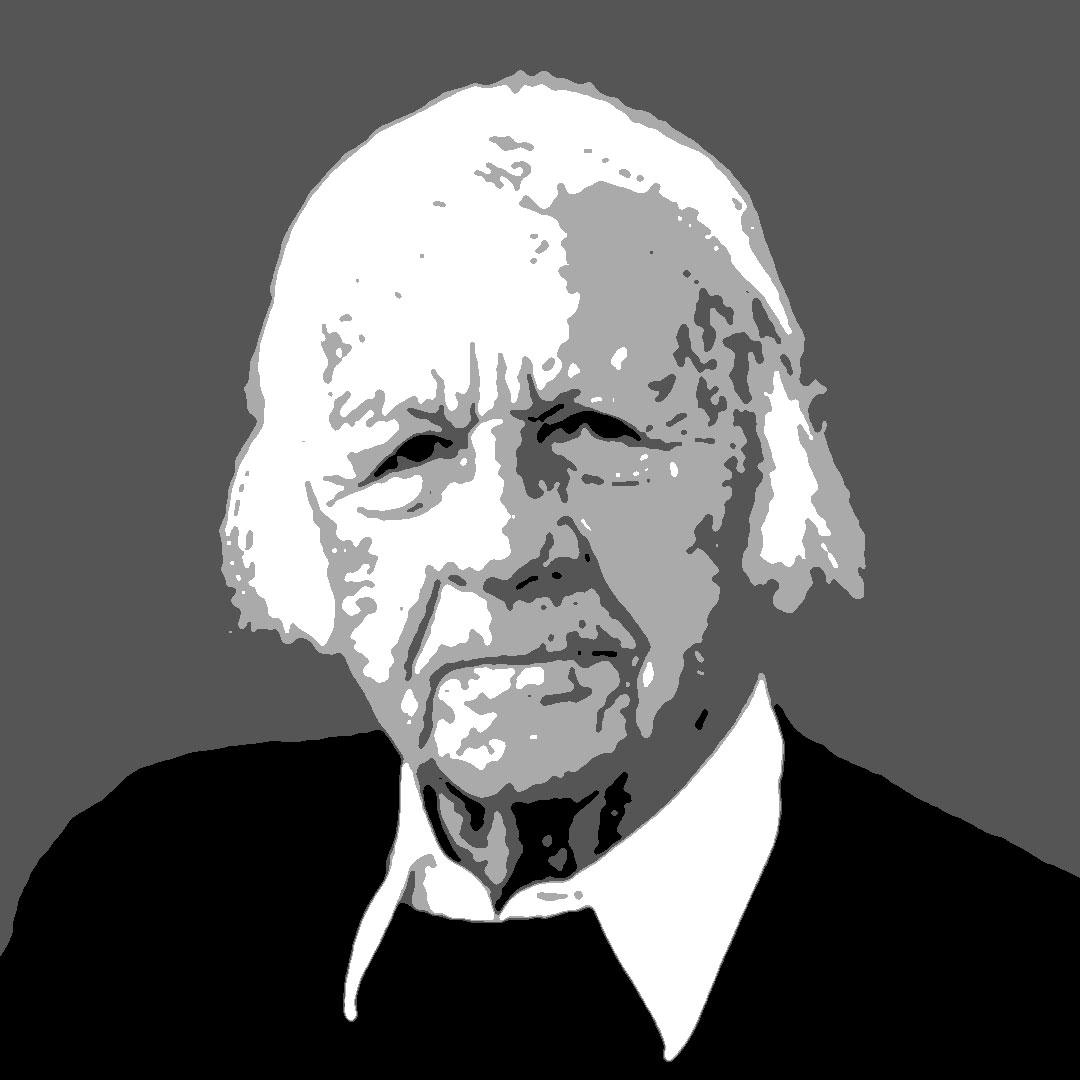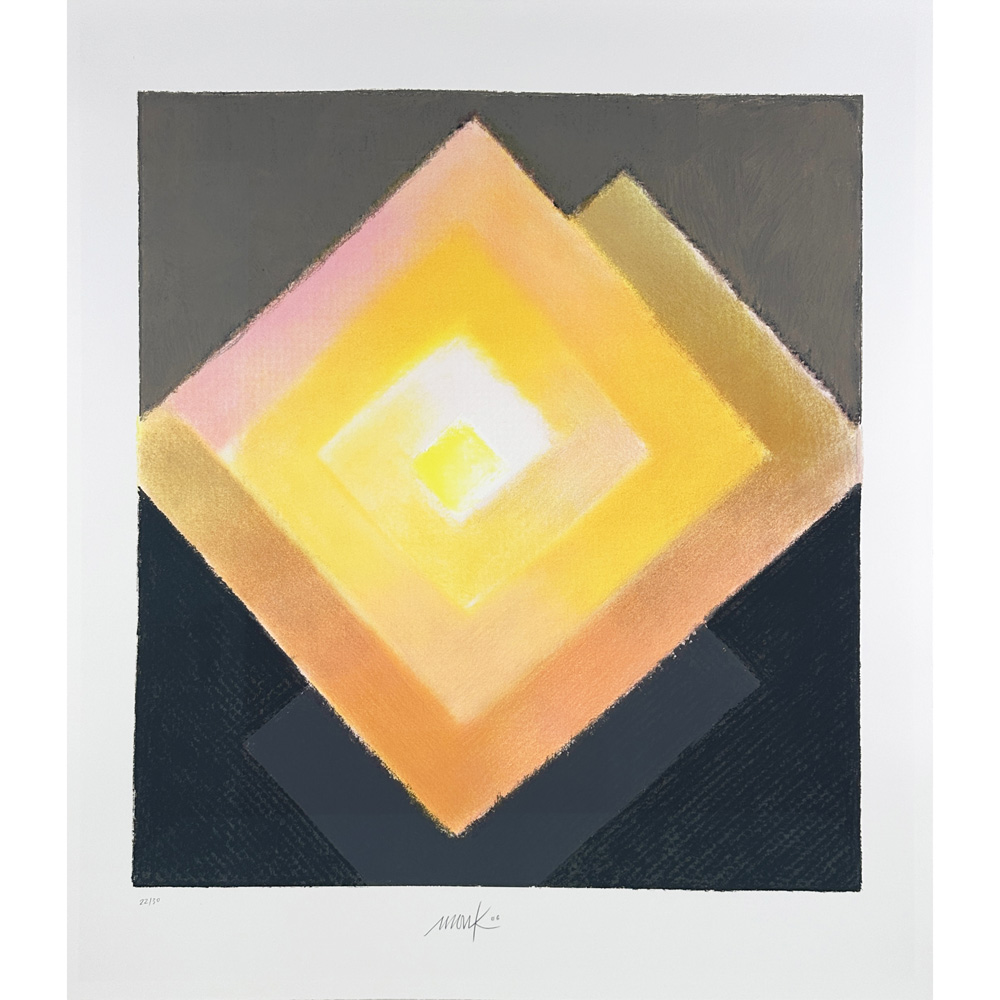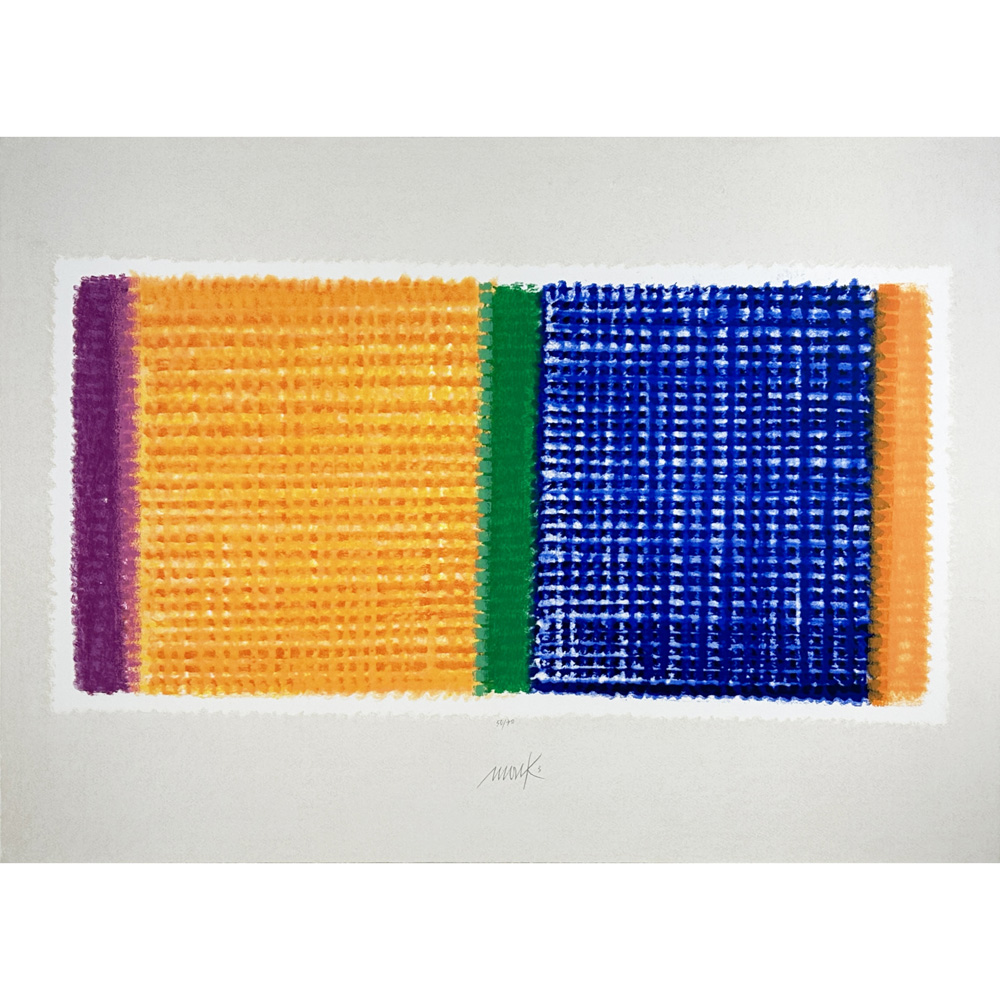
Otto Heinz Mack (born March 8, 1931 in Lollar, Hesse) is a German sculptor and painter and co-founder of the internationally influential ZERO group.
Mack became known for his experimental light reliefs and his light installations in the desert, which are among the earliest examples of land art. He has participated in documenta several times and represented Germany at the Venice Biennale in 1970.
Heinz Mack was born in 1931 in Lollar, Hesse. From 1950 he studied at the Art Academy in Düsseldorf, and from 1953 philosophy at the University of Cologne. He completed his education with the state examination in art education and philosophy in 1956.
In 1955 he and Otto Piene moved into a studio at Gladbacher Strasse 69 in Düsseldorf. For Heinz Mack, this period was artistically groundbreaking and characterized by constant experimentation with material, light and movement. In addition to the dynamic structures in painting, Mack created numerous sculptural works such as vibrating light reliefs, monumental light columns or light-reflecting cubes. From 1958 onwards, the first so-called rotors were created, in which elements with relief structures are moved by motors. From then on, in addition to light, movement also played a central role in his work and made him one of the main representatives of kinetic art.
On April 11, 1957, Mack organized the first evening exhibition together with Piene in the studio rooms on Gladbacher Strasse. This series of events eventually gave rise to the ZERO group initiated by Otto Piene and Heinz Mack. The term "ZERO" was coined in the autumn of 1957; however, the official founding event is generally considered to be the 7th evening exhibition held on April 24, 1958, which was entitled The Red Picture and at which the first issue of the ZERO magazine was also published. In the same year, Mack took part in documenta II. Günther Uecker joined the group in 1961 as the third core member. Mack worked with Uecker and Piene on the light mills from 1961 onwards. In 1964 Mack took part in the documenta III in Kassel together with Piene and Uecker, where they showed the light room (Hommage à Fontana), which is now in the collection of the Museum Kunstpalast, Düsseldorf.
In 1959 Mack formulated the so-called Sahara project and from 1962/63 onwards he installed his Jardin artificiel, consisting of sand reliefs, cubes, mirrors, wing reliefs, sails, flags and monumental light steles, several times in the deserts of Africa. In 1968 the much-acclaimed and award-winning film Tele-Mack was made, in which Mack experimentally researched and documented the energy and power of light. Mack visited the Tunisian desert together with director Hans Emmerling for this purpose. In 1976 he travelled to the Grand Erg Oriental in Algeria and for the first time to the Arctic to realise his utopian projects and ideas. There he expanded the repertoire of his sculptural objects to include floating Plexiglas bodies, light flowers, prismatic pyramids, ice crystals and fire rafts. In the same year he published the book Expedition in künstliche Gärten with the photographer Thomas Höpker, in which photos of the artistic journey into the Algerian desert and the Arctic are captured.
In 1970 Mack was represented at the Venice Biennale with the German contribution (together with Thomas Lenk, Georg Karl Pfahler and Günther Uecker). In the same year he was given a professorship for a teaching post in Osaka (Japan) and became a full member of the Academy of Arts in Berlin, where he remained until 1992. In 1972 he installed pumps and spotlights in a water basin in Munich's Olympic Park, creating a water cloud up to 36 metres high. In 1977, the artist again took part in the Kassel documenta. As a full member of the German Artists' Association, Mack took part in many of the DKB's annual exhibitions between 1961 and 1986. The Solomon R. Guggenheim Museum in New York opened a major ZERO exhibition in October 2014, which was presented in 2015 in the Martin Gropius Building (Berlin), the Stedelijk Museum (Amsterdam) and the Sakip Sabanci Museum (Istanbul). In total, this group exhibition was visited by almost 700,000 art lovers.
Light is the central theme in Heinz Mack's non-objective art. To date, his works have been made accessible to the public in around 400 solo exhibitions and numerous group exhibitions. His works are represented in 140 public collections. A large number of books, catalogues and two films document his work. Today, the artist lives in Mönchengladbach and Ibiza.
















